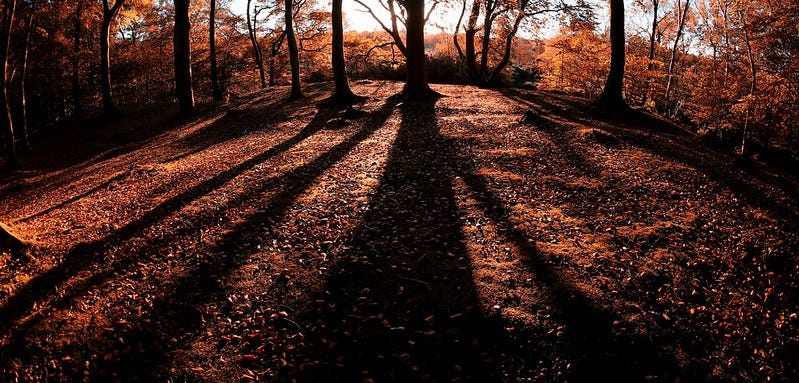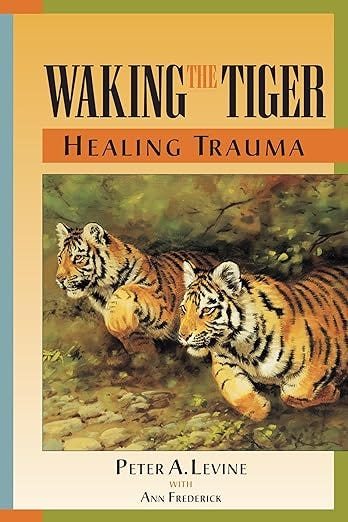Note from Caitlin of Dose of Wonder about today’s guest post author:
Dr. Christine DiBlasio is a psychologist and 5th degree black belt in kempo karate who has combined both of these fields to develop an innovative and integrated mind-body trauma treatment for survivors of all types of violence —including physical and sexual violence, DV, kidnapping, stalking, emotional abuse and more. She also co-founded a non-profit focused on preventing violence, fostering resilience, healing trauma and building safer communities; this work earned the USA Today’s Vermont Woman of the Year award.
You can check out her Substack, Unsilenced, For Good right here.
So without further ado…
The following post was inspired by Dr. Vinall’s (@dvinall) courageous writing entitled Backseat to a Beating.
With incredible courage and clarity, Dr. Vinall recounts how as a 16-year-old, she found herself suddenly and without warning, a powerless bystander to a violent assault.
She was unable to stop it. Unable to forget it.
Unable to share it until a few weeks ago.
Perhaps you can relate.
She is not alone.
So many survivors silently carry tremendous burdens; inner wells of hurt and undeserved self-blame and shame—-whether the assault happened to them or someone else.
“Intellectually” knowing that an assault is not your fault is not the same as fully believing that an assault is not your fault. The latter can remain elusive. My decades of work with brave survivors has shown me this, time and time again.
What we know to be true is not always felt to be true in our hearts and soul.
To be clear, the responsibility for violence lies with the one who has the true power to start or stop it; the person doing the assaulting.
Victims don’t cause attacks; attackers do.
Furthermore, the impact of trauma does not diminish simply with the passing of time.
Instead, trauma’s powerful effects can extend long after the original incident. Case in point: I had the honor of working with a 95-year-old woman whose teenage trauma haunted her still. Silence—while so very understandable and sometimes absolutely necessary— can fuel shame. Sharing, when you are ready and safe—and with a compassionate, non-judgmental, and trusted witness, can help dispel shame and foster healing.
Why does trauma haunt so many of us?
Well, first and foremost, because it matters.
What happened to you matters.
Additionally, our brain operates in the service of our survival to keep us safe and is on high alert to prevent future trauma. While we might forget what we had for dinner last night, the sensory cues present during the original trauma—the smells, the sounds, the sights, the physical sensations, snapshot images—all are preserved and etched in our memory, without a time stamp or a logical narrative. These sensory cues are stored in the right side of our brain (nonverbal, spatial, sensory part of the brain), without words or context. Why? From an evolutionary perspective, this is designed to keep us safe.
The brain and body are operating in the service of our survival.
Following trauma, the brain’s alarm system remains on high alert to protect us. If the system detects a sensory cue reminiscent of the original trauma and thus signals possible danger, it causes our bodies—quickly and without thinking- to automatically respond with the fight, flight, freeze response. All of this is a dedicated and automatic effort to keep us safe.
You may know this as “triggering” or trauma activation. Our highly sensitive and very protective threat detector and response system can leave us hypervigilant, confused, and exhausted as we respond to numerous “false alarms”.
Or it can save your life.
A quick, automatic neurobiological response could save your life.
A few more important points about violence and trauma:
70% of assault survivors may experience the very natural freeze response, otherwise known as tonic immobility, in the face of fear and threats to their safety.
Don’t take my word for it.
Victims frequently report immobility during rape and sexual assault, often using the term ‘freezing’. Neuroscientific evidence suggests fear and threat can block cortical neural circuits for action control, leading to involuntary immobility. Defense arguments that blame victims for freezing are thus inappropriate and unjust.[1]
This automatic freeze response may be activated whenever there is an elevated level of fear, anxiety, danger, or stress (e.g., has your mind ever gone completely blank when delivering a public presentation?) Additionally, the speech area of the brain-Broca’s Area- also shuts down during these high levels of fear, stress, or anxiety—rendering one silent and unable to speak. This can happen during the initial trauma as well as when you recall the trauma.

Why does this happen? From an evolutionary standpoint, being silent and still may have made humans less visible to predators. It may have kept us safe and alive.
Many animals also freeze and are completely silent when first encountering a threat (e.g, mice, rabbits, etc.); this response can be highly adaptive and life-saving.
See this video for a dramatic example of tonic immobility, or the freeze response exhibited by an impala. Once the danger is gone and the impala is safe, notice how it shakes its entire body as a way to reset its nervous system, before it runs away. Dr. Peter Levine talks about this “shaking” in humans as well. A later post will discuss this phenomenon as it relates to completing the stress/trauma cycle and how it can promote healing.
All of this to say that the freeze response, the inability to speak, trauma activation later on-- all of this and more-is simply neurobiology in action, not a character flaw.
It’s not your fault.
This bears repeating:
The responsibility for violence lies with the one who has the true power to start or stop it; the person doing the assaulting.
Victims don’t cause attacks; attackers do.
For further information:
Neuroscience Shows Why Sexual Assault Victims “Freeze”; It’s Not Consent
Fostering Safety in an Unsafe World
Here is the conversation from Dr. Vinall’s post:
Dr Christine DiBlasio Unsilenced, For Good
You know this: the freeze response is a natural ANS response to fear and shock. Dave's behavior was unexpectedly aggressive. You were in a highly agitated state and your "thinking brain" went offline. It's just neurobiology operating in the service of your survival. Now, with time, and when calm, you can plan and act, and you are. I know that you know all of this. I just wanted to say it. You are using that traumatic experience to help others. Go you. It is the best that we can do when we can't unwind the past to fix it; instead we add good to the present and future.
Thank you for you compassionate words. It's true; freeze has often been my trauma response (at least with men) even when I wish it were always fight.
And there's also something useful about mental rehearsal. At 16, I had never entertained the thought of a hate crime (so naive). But when we stop and picture how we might respond, we are better empowered to take an active response should we encounter it in the future.
Dr Christine DiBlasio Unsilenced, For Good Jun 9
True. And if I had my way, a 16-year-old--or anyone--wouldn't have to contemplate and mentally rehearse how to deal with hate crimes. Yet, we do. You weren't naive. You were a kid.
IT SHOULDN'T HAVE HAPPENED.
And, the freeze response is the most prevalent response (especially during sexual violence--it occurs 70% of the time). It used to be evolutionarily adaptive. It just isn't always adaptive in our current world, and our neurobiology hasn't evolved to meet current threats. This freeze response IS changeable though. I have seen it in the work that we do via The Safety Team, and in my practice.
BTW, sometimes the freeze response can save your life. If you had tried to intervene, Dave might have hurt you too. In DV situations, I wouldn't necessarily recommend fighting back if you can't escape safely. Its complicated.
[1] Dhawan, E., Haggard, P. Neuroscience evidence counters a rape myth. Nat Hum Behav 7, 835–838 (2023). https://doi.org/10.1038/s41562-023-01598-6
Thanks to Christine for sharing her words and Dr. Vinall’s courageous story with us here at Dose of Wonder. Please don’t forget to go check out Christine’s Substack Unsilenced, For Good for more great articles about resilience, trauma, trauma recovery and mind-body healing.
If you like what you’ve read today at Dose of Wonder, perhaps consider sharing this article or subscribing.











